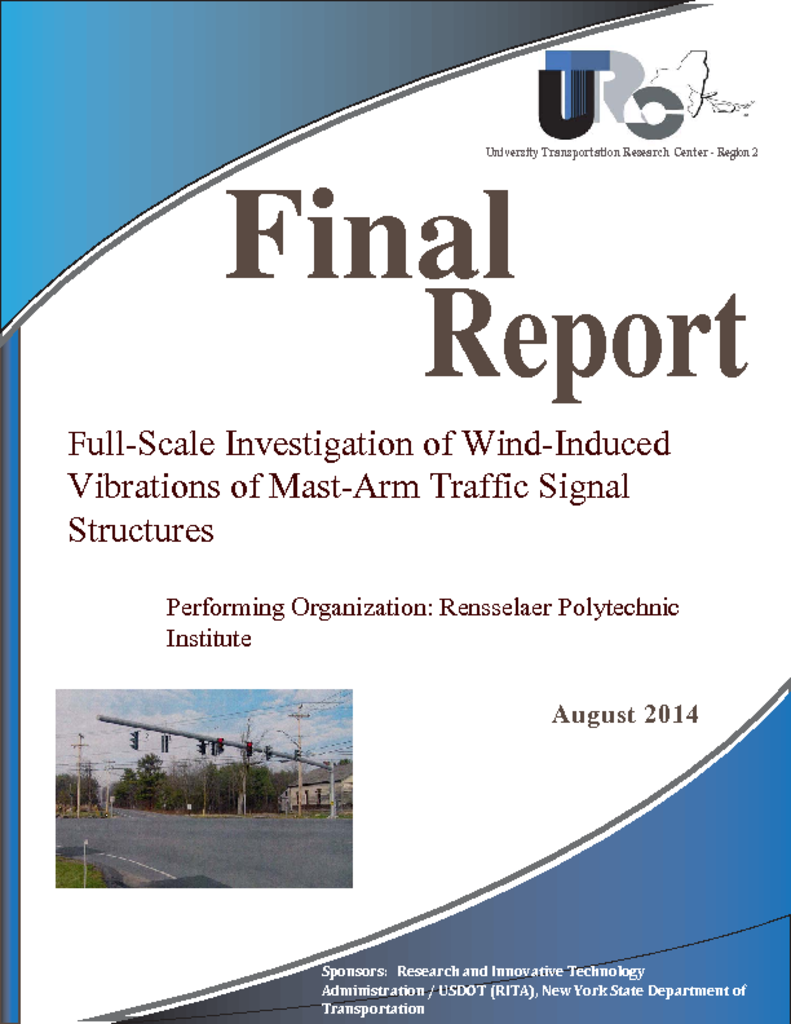Because of their inherent flexibility and low damping ratios, cantilevered mast-arm traffic signal structures are susceptible to wind-induced vibrations. These vibrations cause structural stresses and strains to develop in a cyclical fashion which can lead to reduced service life due to fatigue and, in extreme cases, full collapse. In 2001, after the collapse of several of these structures throughout the United States, American Association of State Highway and Transportation Officials (AASHTO) code standards were updated to include fatigue provisions for traffic signal supporting structures. In New York State, there is particular concern regarding structures spanning longer than 14 meters which currently do not meet these updated fatigue provisions. To address this concern, a full-scale experiment was conducted using an existing 25 meter mast-arm traffic signal structure, located in Malta, NY, in which the response of the structure was observed in relation to in-situ wind conditions. In previous studies, high-amplitude vertical vibrations of mast-arm traffic signal structures have been shown to be due to vortex shedding, a phenomenon in which alternatingly shed, low-pressure vortices induce oscillating forces onto the mast-arm causing a cross-wind response.


